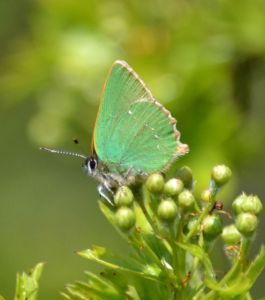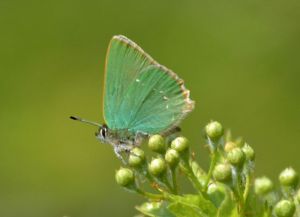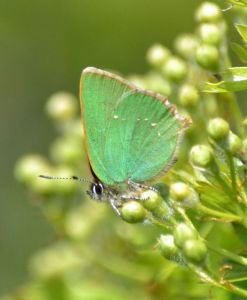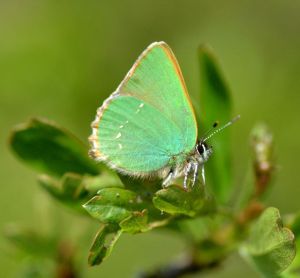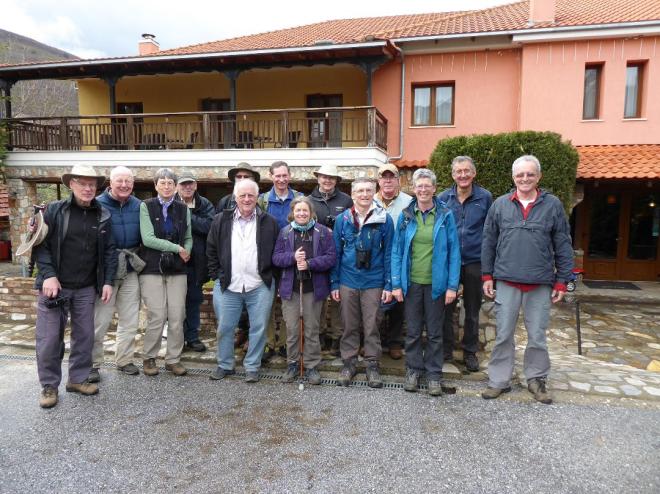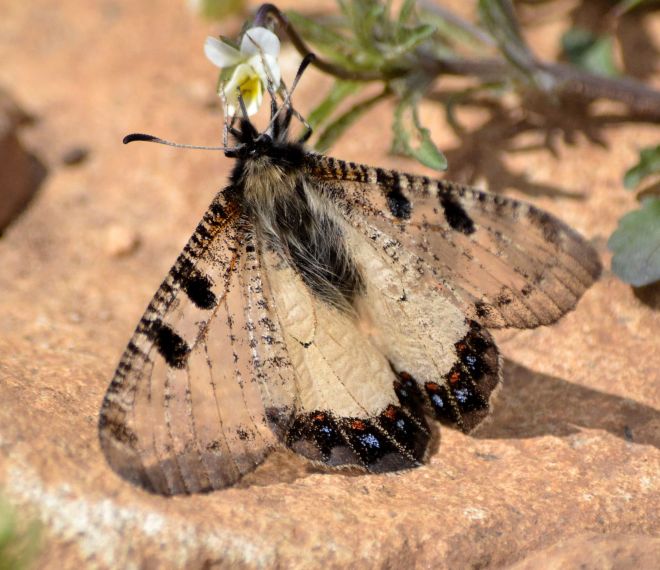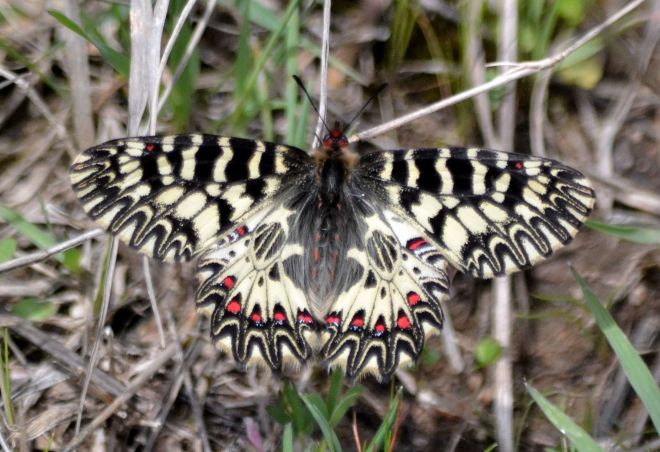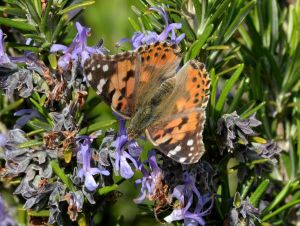While consulting RBA three days ago I realised there were indeed birds in England that I really ought to be making the effort to see. Having not travelled nationally since January simply because there was nothing around that interested me, I had got in the habit of just skimming through the listings looking for bold red print and maybe not really paying proper attention.
Suddenly I now realised a state of insidious lethargy could have settled upon me, that had most likely deepened after my recent butterflying trip to northern Greece was so wet as to be demoralising rather than motivating. In short hitting the road to see some birds would do me no harm at all. Of the two options that now stood out one was an Ortolan Bunting in Essex, that was not a lifer but a good opportunity to see that species well in spring.
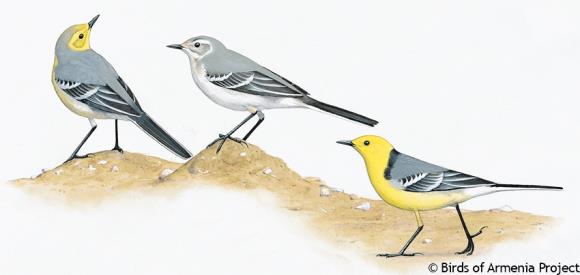
Citrine Wagtail (from left) female, juvenile and male
The second item of interest was a female Citrine Wagtail on the Severn estuary. This lifer is expanding westward from it’s closest breeding grounds, with increasing numbers of British records in passage seasons, though more usually in far flung parts of the kingdom that are beyond my preferred range. But foul weather was forecast and so an edgy wait ensued. While the Ortolan moved on the Citrine stayed put and so on Sunday morning I set off.
For the past four days the latter bird had frequented Pilning Wetland (ST550864), a small local reserve in south Gloucestershire behind the sea wall between the two Severn road bridges. On 25th it had been joined by a male briefly, before the latter relocated westward to the Taff valley north of Merthyr Tydfil. Arriving at the first of those sites at around 9:15am, I made the perhaps 500 metre walk out to where a small group of birders clearly had located my quest.
Within minutes the female Citrine Wagtail came into view, perched high on the nearest expanse of mud to her observers, much like in the picture below borrowed, I hope agreeably from the local website Severnside Birds. (If not I will remove the image.) It was a really cracking view that was unlikely to be bettered, and so it proved. By the time I set up my disgiscoping kit the bird had gone back into cover.
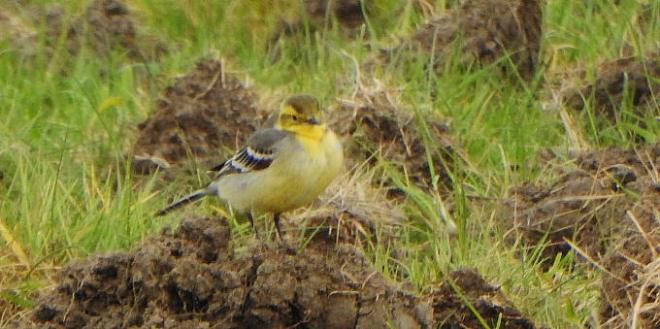
The Severnside Citrine Wagtail (fem) © and with thanks to Paul Bowerman
This was indeed a very attractive Wagtail; her subtle, lemon yellow tones, slate grey upper parts, striking white wing bars and pale cheeks rendering her quite different from any other of that genus I have observed previously. I remarked to my companions how there were no photographers amongst us. Indeed I was the only person present with a camera and I soon appreciated why. Over the next 2½ hours the bird did not present another similar opportunity, becoming flighty and only being seen distantly as over her previous days here.
As I waited patiently with my digiscoping kit now set up, the bird was relocated after some 30 minutes in a ploughed area away to our left where most prior sightings had come from. Then she flew a circuit, calling as she went before re-settling in the ploughed area. The flight call is louder and harsher than Yellow Wagtail, so I understand. She returned to the original mud just once but only very briefly and hence I was not to get any pictures. But at all times this bird’s rather under-stated and alluring attractiveness stood out wherever she went.
By 11am things were becoming too crowded for my liking. This must be a popular spot with both the general public and those with a more general interest in the site than the visiting twitchers. The number and common-ness of different birds now being called and discussed became quite distracting as I continued to seek out the scarcity in the forlorn hope of taking its picture. And so at around midday I moved on.
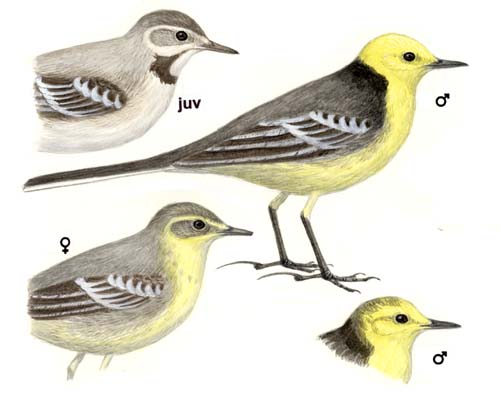
Citrine Wagtail © rights of owner reserved
My research reveals Citrine Wagtail has a very wide global range, breeding from the Arctic and sub-Arctic to the sub-tropics. It is a summer visitor to parts of central and eastern Europe, this population wintering mainly in India and south-east Asia. Breeding females are said to suggest a dusky-backed Yellow Wagtail, while juvenile and first winter birds recall pale White Wagtail. Though breeding males show a fully yellow head and underparts, the head’s contrast with the black neck-shawl is diagnostic.
As I approach 350 British birds, mostly within 150 miles of Oxford, the intervals between list additions are increasing. But this was another tricky species that had come to he who waited and this time around 85 miles from home. And in retrospect the buzz that comes from getting on the road to track down new birds is definitely something I have missed in the last three months. Next, please!

